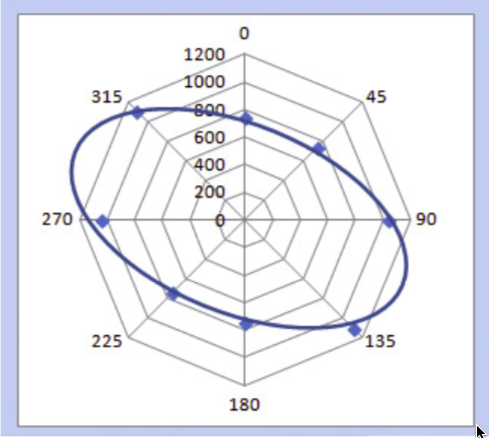Use of genetic algorithms for optimization in the calculation of cell-based variograms for the simulation of a reservoir

Published 2020-12-10
Keywords
- Geostatistics,
- genetic algorithms (GA),
- variograms
How to Cite
Copyright (c) 2021 Universidad Industrial de Santander

This work is licensed under a Creative Commons Attribution 4.0 International License.
Abstract
The importance of analyzing the continuity and regularity of the properties of a reservoir lies in developing a better prediction of oil reserves in situ, therefore, it is necessary to know how these parameters are going to be dispersed. Incorporating all the information available from the study area, we carry out the reservoir characterization process that aims to simulate a reservoir model as close to reality as possible. For this, the analysis of the variograms is applied as a geostatistical technique, which allows to analyze the spatial behavior of the regionalized variables or properties of the reservoir. For this calculation, some parameters must be defined as input data for the modeling.
In the present work, an algorithm was developed to automate the calculation of variograms for the optimization of the selection of the parameters that are needed for their adjustment in geostatistical modeling. This technique consists of the implementation of Genetic Algorithms (GA), tested through experimentation, which can be used to optimize the calculation of variogram based on cells or mesh.
The Genetic Algorithms (GA) technique exploits the historical information (implicit memory) of the reservoir, to consider new areas of interest with high hydrocarbon storage potential, for which the algorithm has been built to improve the calculation and adjustment variographic.
Downloads
References
Castaño, A. F., & Vergara, F. (2004). Simulación geoestadística aplicada al modelamiento de yacimientos de petróleo, Tesis Ingeniería en Petróleos. Universidad Nacional de Colombia.
Erazo-Bone, R., Escobar-Segovia, K., Arcentales- Bastidas, D., Vargas-Gutiérrez, X., Arreaga- Arévalo, A., & Román-Aguilar, A. (2018). Optimization of the drilling parameters in low angle wells by the application of statistical analysis. Proceedings of the LACCEI international Multi-conference for Engineering, Education and Technology. Jamaica: LACCEI.
Escobar-Segovia, K., Erazo-Bone, R., Chuchuca- Aguilar, F., Murillo, Y., & Solórzano, F. (2019). Análisis multivariable para la selección de las mejores zonas productivas de la formación Santo Tomás, sección 68, campo Gustavo Galindo Velasco. Fuentes el Reventon Energetico, 47-54.
Escobar-Segovia, K., Erazo-Bone, R., Portilla-Lazo, C., Arcentales-Bastidas, D., Chuchuca-Aguilar, F., Cedeño-Macias, D., . . . Uguña-Guachilema, E. (2018). New challenge to optimize wells drilling using the geomechanical model design. Proceedings of the LACCEI international Multi- conference for Engineering, Education and Technology. Lima: LACCEI.
Gañán, J. (2014). Caracterización de un reservorio aplicando técnicas geoestadísticas para un Campo del Distrito Amazónico. Tesis Ingeniería en petróleo. Quito, Ecuador: Escuela Politécnica Nacional.
Giraldo, R. (2011). Introducción a la Geoestadística teoría y aplicación. Bogotá: Universidad Nacional de Colombia.
Hernández, J., Gallard, R., & Días, J. (2011). Algoritmos genéticos y su aplicación en optimización de redes. Tesis de Maestría. La Plata, Argentina: Universidad Nacional de La Plata.
Kelkar, M., & Pérez, G. (2002). Applied Geostatistics for Reservoir Characterization. Society of Petroeum Engineers, 226-238.
Legrá, A., & Atanes, D. (2010). Variogramas adaptativos: un método práctico para aumentar la utilidad del error de estimación por kriging. Minería y Geología, 26(4), 53-78.
Lucín, D., & Malavé, C. (2015). Implementación de algoritmos genéticos para optimizar el cálculo de variogramas en técnicas geoestadísticas. Tesis de Ingeniería en Petróleo. La Libertad, Ecuador: Universidad Península de Santa Elenea.
Mondavi, D., & Sanclemente, E. (2015). Implementación de Algoritmos Genéticos Para la Optimización de Parámetros de Yacimiento Mediante Curvas de Producción de Pozos Seleccionados en un Campo del Oriente Ecuatoriano, Tesis Ingeniería en Petróleo. Guayaquil, Ecuador: Escuela Superior Politécnica del Litoral.
Parra, A. (2011). Adaptación De Algoritmo De Sintesis De Texturas Para Simulación Geoestadistica De Multiples Puntos Condiciónada. Tesis de Master en Computación. Chile: Universidad de Chile.
Portilla, C. (2018). Modelo geoestadístico integrado a partir de la interpretación de datos de pozos para un campo petrolero ecuatoriano. Tesis de Maestría. Lima, Perú: Universidad Nacional Mayor de San Marcos.